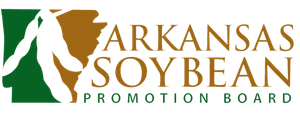Improving Yield and Yield Stability for Irrigated Soybeans
Principle Investigators: C. G. Henry, RREC, P. B. Francis, UAM/SEREC; L. Espinoza, UAEX; D. Saraswat, UAEX
Cooperators: L. Earnest, SEBES Station Manager, S. Hayes, SEBES, C. Robert Stark, Jr., UAM/SEREC; J. Ross, UAEX, Chris Grimes, UAEX; Mike Daniels, UAEX; Steve Hall, UAEX
Production System: All
Status: Final Report
Background
This project is a continuation of an ongoing effort to improve yield and yield stability for irrigated soybeans in Arkansas. Coordination of past and present projects are needed for a better understanding of the soil-plant-water relationship necessary for continued improvements in yield and yield stability of irrigated soybean. In this project the overarching goal has been to determine the effect of maturity group, deep tillage, investigate irrigation scheduling methods, and improve irrigation scheduling recommendations.
This project has conducted several irrigation treatment tests, in Stuttgart, Rowher, and Marianna Experiment Stations. Previously replicated trials were conducted testing the difference between maturity groups. Soil moisture was monitored. Another series of tests were performed testing soil moisture thresholds as for irrigation triggers and also testing the effect of deep tillage.
Additional experiments were conducted often in conjunction with these tests for atmometers, water mark sensors, weather based scheduling and computer based scheduling (Arkansas Irrigation Scheduler). In the last year, a coordinated experiment was conducted across all three sites to test a series of higher irrigation triggers, deep tillage, and the effect of gypsum on yield and water use. The three sites represent the silt loam, silt loam with pan, and clay soil types.
Additionally, this project demonstrates and pilots atmometers, soil moisture sensors, and is improving the Arkansas Irrigation Scheduler and mobile applications for smartphones on cooperating farms and on the Arkansas Discovery Farms Program. The project also interfaces with the Soybean Research Verification program collecting soil moisture profile data and water use data. These are both outlets for initial transferring and testing of new recommendations to farmers.
Results:
The objective of this project is to investigate irrigation scheduling methods for improving yield and yield stability of irrigated soybean for conditions and production systems in Arkansas, allowing for more profitable production. Results from experiments conducted in Stuttgart, Rowher and Marianna are shown below.
Silt Loam with Pan
| Deep Tillage | Deep Tillage + 1T/ac Gypsum | No-Deep tillage +1 T/ac Gypsom only | No deep tillage | Average | |
| Fully irrigated | 60.9 | 60.6 | 52.1 | 47.6 | 55.3 |
| Deficit +1″ | 57.8 | 57.1 | 38 | 9 | 48 |
| Deficit +2″ | 53.3 | 54.1 | 32.7 | 36.8 | 44.2 |
| Non-irrigated | 19 | 21 | 11 | 13.7 | 16.2 |
| Average | 47.8 | 48.2 | 33.45 | 34.3 |
Silt Loam
| Deep Tillage | Depp Tillage + 1T/ac Gypsum | No-deep tillage + 1 T/ac Gypsum only | No deep tillage | Average | |
| Fully irrigated | 42.7 | 47.1 | 39.3 | 44.6 | 43.4 |
| Deficit +1″ | 40.1 | 43.01 | 35.3 | 40.4 | 39.7 |
| Deficit +2″ | 38.3 | 41.34 | 31.9 | 39.2 | 37.7 |
| Non-irrigated | |||||
| Average | 40.37 | 43.8 | 35.5 | 41.4 |
Clay
| Deep Tillage | Deep Tillage + 1T/ac Gypsum | No-deep tillage + 1 T/ac Gypsum only | No deep tillage | Average | |
| Fully irrigated | 44.3 | 47.0 | 40.4 | 38.8 | 42.6 |
| Deficit +1″ | 36.0 | 40.8 | 36.8 | 38.1 | 37.9 |
| Deficit +2″ | 43.3 | 43.1 | 36.7 | 42.8 | 41.5 |
| Non-irrigated | 34.9 | 23.5 | 19.4 | 19.6 | 24.4 |
| Average | 39.6 | 38.6 | 33.3 | 34.8 |
In general, deep tillage improved yields in the silt loam soil with pan and clay soil types. Deep tillage plus gypsum was the highest yielding treatment in the silt loam but the tillage treatment effect did not itself improve yield. The treatment effect of gypsum is not yet evident and it may take a higher rate or it may take longer for this treatment effect to improve yields.
When evaluating irrigation triggers, current recommendations were assumed to be the fully irrigated treatments, increasing the deficit resulted in lower yields. While the yields are lower, the number of irrigations was less and the water use was generally less (data not shown), additional work is necessary to determine profitability differences between these irrigation trigger levels.
An online version of the Arkansas Irrigation Scheduler has been developed and will be available contingent on weather data available from the Arkansas State Plant Board. Charts for atmometers have been developed for Arkansas soils and conditions and will be made available to growers for 2014. Additionally, these charts have been coded into an android mobile phone application that will be tested this spring.
Conclusions
Several conclusions are emerging as new recommendations
- There was no significant difference in yield between maturity groups on irrigation scheduling.
- There was no significant difference between irrigation scheduling methods (atmometer, weather station scheduling, Arkansas Irrigation Scheduler, soil tension). All resulted in comparable yields.
- Deep tillage results in higher yields on silt loam soils with pans.
- It is uncertain if gypsum results in improved irrigation efficiency or higher yields, additional research is clearly needed.
Additional Resources
Download and view a Slide Show from Dr. C. G. Henry on Irrigation Pumping Plant Efficiency.
